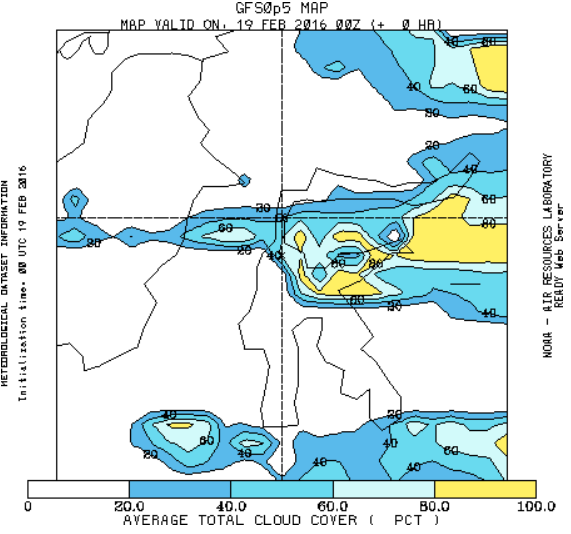Dr. Wolfgang Strickling

 During the entire eclipse, except the short
moment of totality, you must protect your eyes! Use certified
eclipse shades or eclipse glasses. Common sunglasses
are not sufficient by far! Binoculars
and telescopes must be equipped with proper filters to reduce
the light. Very important: Never use eclipse shades behind a
telescope ocular, because they will melt in the focused heat of
the lenses! If you are in the central zone, you do not need any
shades during totality, when the sky becomes completely dark as
night. You can observe the corona safely with your naked eyes
and even with binoculars or telescopes. But do not forget to put
filters and shades on before totality is over!
During the entire eclipse, except the short
moment of totality, you must protect your eyes! Use certified
eclipse shades or eclipse glasses. Common sunglasses
are not sufficient by far! Binoculars
and telescopes must be equipped with proper filters to reduce
the light. Very important: Never use eclipse shades behind a
telescope ocular, because they will melt in the focused heat of
the lenses! If you are in the central zone, you do not need any
shades during totality, when the sky becomes completely dark as
night. You can observe the corona safely with your naked eyes
and even with binoculars or telescopes. But do not forget to put
filters and shades on before totality is over! 
Timetable of the Great Solar Eclipse 2016 for several
locations
|
|||||
| City |
Begin partial phase |
Begin totality |
End totality |
End partial phase |
Timezone |
| Pulau Pagai-Utara, Indonesia |
07:25:53 |
08:18:23 |
08:20:15 |
09:25:56 |
UTC+8h |
| Palembang, Sumatra, Indonesia |
07:20:29 |
08:20:48 |
08:22:41 |
09:31:27 |
UTC+8h |
| Jakarta, Java, Indonesia | 07:19:51 |
only partial |
only partial | 09:43:41 |
UTC+8h |
| Palu, Sulawesi, Indonesia | 07:27:51 |
08:37:47 |
08:39:52 |
10:00:34 |
UTC+8h |
| Pulau Ternate, Indonesia | 08:36:03 |
09:51:40 |
09:54:19 |
11:20:50 |
UTC+9h |
| Kuala Lumpur, Malaysia |
07:24:22 |
only partial | only partial | 09:31:00 |
UTC+8h |
| Singapore | 07:23:01 | only partial | only partial | 09:32:54 |
UTC+8h |
| Manila, Philippines |
07:51:14 |
only partial | only partial | 10:14:20 |
UTC+8h |
| Bangkok, Thailand |
07:39:03 |
only partial | only partial | 09:32:39 |
UTC+8h |
| Maximum of Eclipse, Pacific Ocean (4:09
seconds duration) |
0:02:41 |
01:55:06 |
01:59:16 |
03:30:25 |
UTC |
| Darwin, Australia |
09:07:29 |
only partial | only partial | 11:35:00 |
UTC+9.5h |
| Yap Island, Micronesia |
March 09 10:02:49 |
only partial | only partial | 13:01:48 |
UTC+10h |
| Hawaii, USA |
March 08
16:36:52 |
only partial | only partial | 18:30:06 |
UTC-10h |
 Unfortunately, this eclipse take place
during the rainy monsoon season in most parts of the central path.
You have to expect many clouds over the path of the central
eclipse, especially the easy to access Indonesian islands Sumatra,
Java and Kalimantan. According to Jay Anderson the cloud
coverage probability in Indonesia varies from nearly 80 % in
central Sumatra to about 55 % in the Molucca Sea. So a good choice
might be a location at the western coast of Sulawesi or Halmahera
or one of the smaller islands Ternate, Tidore or Makian west of it
in the Molucca Sea.
Unfortunately, this eclipse take place
during the rainy monsoon season in most parts of the central path.
You have to expect many clouds over the path of the central
eclipse, especially the easy to access Indonesian islands Sumatra,
Java and Kalimantan. According to Jay Anderson the cloud
coverage probability in Indonesia varies from nearly 80 % in
central Sumatra to about 55 % in the Molucca Sea. So a good choice
might be a location at the western coast of Sulawesi or Halmahera
or one of the smaller islands Ternate, Tidore or Makian west of it
in the Molucca Sea.
 Last minute cloud
predictions
Last minute cloud
predictions
 Here are
details for a place on the west coast of Sulawesi on the centreline,
calculated with Eclipse
2016:
Here are
details for a place on the west coast of Sulawesi on the centreline,
calculated with Eclipse
2016:![]()